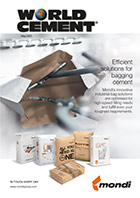Editorial comment
Register for free »
Get started now for absolutely FREE, no credit card required.
According to recent reports, the China Refractory Association is expecting Chinese demand for refractory to decline over the next two to three years. Output for 2014 was 27.972 million t. By 2017, the China Refractory Association is expecting that to fall to 24 million t.
A decline in domestic demand makes sense in an environment of increasing emissions regulations and slowing industrial growth. If you were to draw a Venn diagram of energy-intensive industries subject to environmental regulations and end-users of refractory, it could well be mistaken for a circle. And, of course, the refractory industry itself is energy-intensive and has fallen foul of the same over-development that has driven consolidation (and, in some cases, demolition) in the Chinese cement industry. Earlier this year, the Ministry of Industry and Information Technology (MIIT) launched standard conditions for the refractories industry that include requirements for production layout, energy efficiency, quality management, and so on. Like cement producers, refractory manufacturers are being encouraged to relocate, consolidate and control capacities. While a burgeoning export market (up more than 12% in 2014) will help ease the burden of overcapacity, modernisation and efficiency measures will need to be taken to meet environmental standards.
China is not alone in experiencing falling sales. Worldwide, refractory demand has been steadily declining in line with the drop in industrial production associated with the global economic crisis. As demand returns, there are some indications that users are turning towards higher quality refractory products with a view to their own process quality as well as a more cost-conscious, cautious approach. In the cement industry, where the cost of refractory on a per tonne basis is relatively minimal compared to, say, the steel industry, reliability is equally essential. The pressures of new and various alternative fuels and raw materials require the refractory industry to develop more resilient products in response. No doubt all these topics will be on the table at the UNITECR Congress in Vienna later this year, which World Cement will be covering in our September issue.
It is interesting that while in China industry is stepping away from coal, other countries are stepping towards it. This is notably the case in Africa and especially in Egypt, where a shortage of gas has forced the government to permit cement producers to use coal. Since that announcement, several contracts have been announced with major mill manufacturers (see one such example on page 9) as cement producers rush to make up for lost production time. More on this topic, and on the growth of alternative fuels in Egypt’s cement industry, is included in this month’s regional report, which has an energy focus (see page 32). We hope, as ever, that the articles included in this issue help you make the most of your process. Share your stories by emailing me on the address above or by joining our LinkedIn groups.


